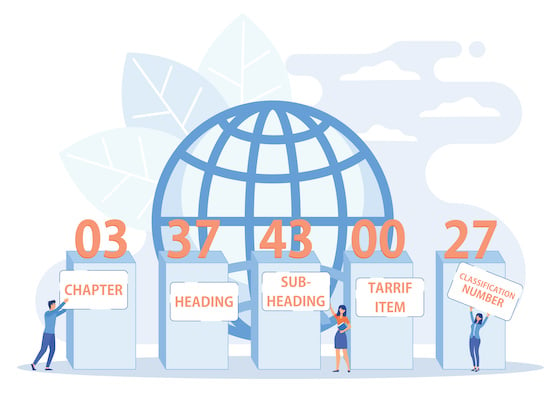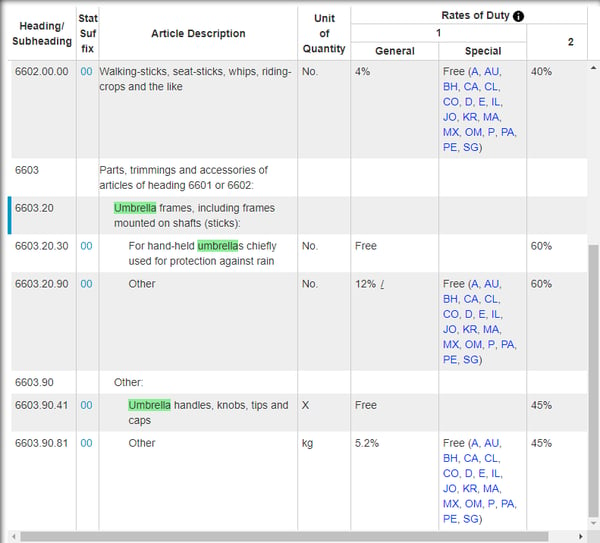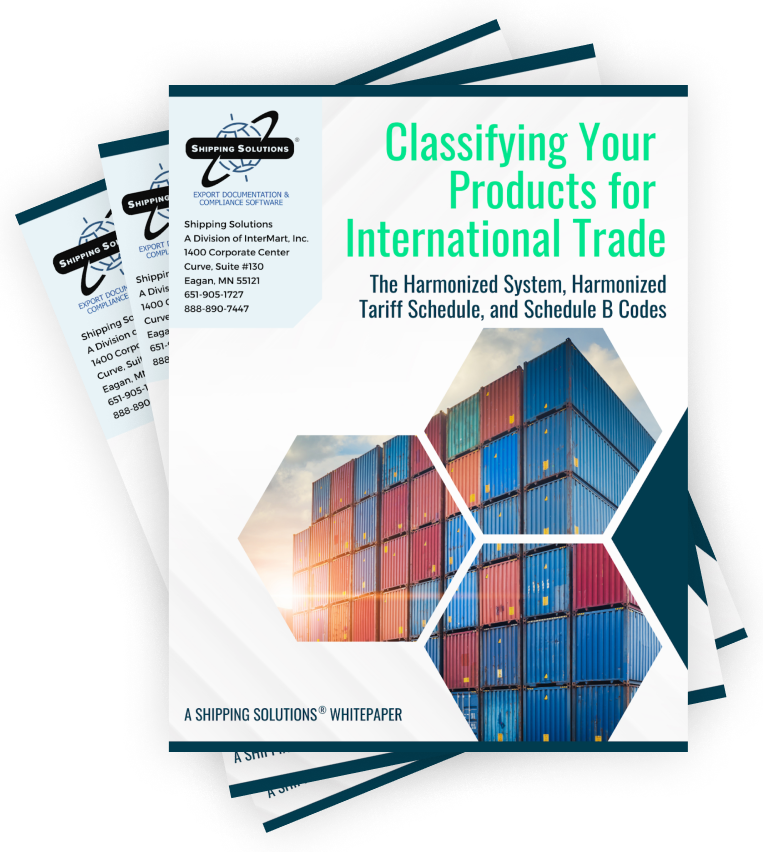The International Trade Blog Export Compliance
HTS Codes: The Importer’s Ultimate Guide
On: April 5, 2023 | By:  Kari Crane |
8 min. read
Kari Crane |
8 min. read

If you import goods into the United States, you need a solid understanding of HTS codes to avoid unnecessary inspections, fees and delays at the border. Customs officials use them to determine the appropriate duties and taxes that must be paid, and they play an important role in staying compliant with trade regulations. In this article, we’ll take an in-depth look at HTS codes, including how they are used, when to use them, how to identify the correct HTS code for your product, and how they compare to HS codes and Schedule B codes.
What are HTS codes?
Harmonized Tariff Schedule (HTS) codes, also referred to as Harmonized Tariff Schedule of the United States (HTSUS) codes, are a standardized system of numbers used to classify goods for import into the United States. They’re used by U.S. Customs and Border Protection (CBP) officials to determine the proper tariff rates and other regulatory requirements for imported goods. HTS codes are administered by the U.S. International Trade Commission (ITC). They are based on Harmonized System (HS) codes, or HS numbers, but include additional digits to provide more specific product information. HTS codes are ten digits long—the first six digits match the HS codes, and the additional digits provide further product details. The 10-digit HTS code should only be used for goods imported into the U.S., because the numbers may not be accurate for other countries of import.
What are Harmonized System (HS) Codes and how do they compare to HTS?
The Harmonized System classification is a six-digit standard, called a subheading, for classifying globally traded products. HS codes, also called HS numbers, are used by more than 200 countries worldwide to identify the duty and tax rates for specific types of products.
Learn more about these codes in our free guide: Export Procedures and Documentation: An In-Depth Guide.
HS codes are administered by the World Customs Organization and recognized in 98% of world trade. Like with HTS codes, other countries add additional digits to the HS number to further distinguish products in certain categories. But these additional digits vary in every country, so HTS codes can only be used for import into the U.S.
When you’re completing export documentation, any documents that are used internationally, such as the commercial invoice, should display the six-digit HS code instead of a longer code.
Who administers the HTS?
The HTS was enacted by Congress on Jan. 1, 1989, replacing the Tariff Schedules of the United States (TSUS), which was not based on the HS system. It is maintained and published by the United States International Trade Commission (USITC), but CBP is responsible for interpreting and enforcing it.
How do HTS codes work?
HTS codes are based on a hierarchical structure that starts with a general product description and then narrows down to specific details.
Products are classified based on their material composition, product name and/or intended function, and each item should fall into only one category. HTS is divided into chapters, each of which has a 2-digit number. Each product category within the various chapters is designated by 4, 6, 8 or 10 digits. The 4-digit categories are called headings. The 6-, 8- and 10-digit classifications are called subheadings.
HTS Codes: An Example
To learn about the structure of HTS codes, let’s look at an example for umbrellas: 6603203000, which includes the description: "For hand-held umbrellas chiefly used for protection against rain" (vs. 6603.20.9000, which is for all other hand-held umbrellas not chiefly used for protection from rain).

Global and U.S. HTS Codes have four components, which are identified by the green numerals beneath the digits:
- Chapter: In this example, 66 is the chapter.
- Heading: In this example, 6603 is the heading. The heading dictates the specific category within any particular chapter.
- Subheading: 6603.20 is the subheading. The last 2 digits of the international Harmonized Code are more specific, defining subcategories of products.
- Extra digits: 6603.20.3000 is the suffix (or extra digits). Countries can use an additional 2-4 digits for country-specific categorizations.

If you are a U.S. importer of this particular product, this is the code you must use. The comprehensive classification list is available for free on the ITC website. You can do a search for HTSUS codes here:
The Fastest Way to Find an HTS code
Our Product Classification Trade Compliance Software can keep you on the right side of regulations by helping you properly classify all your products. It provides several search methods that make the product classification process faster and easier than searching manually through the codes and regulations. Our databases are constantly updated with changing regulations, so you can be sure that you are accessing the most current information available.
Watch the video below to see how the Product Classification Software works and the give it a try for free!
Schedule B Codes vs. HTS Codes
Schedule B and HTS codes are separate entities that are used for exporting and importing, respectively. The Schedule B code is a 10-digit subset of HTS codes for U.S. exporters. Schedule B codes are used for statistical purposes by the U.S. government to monitor U.S. exports.
- Schedule B codes are maintained by the U.S. Census Bureau instead of the ITC.
- As with HTS codes, the first six digits of a Schedule B code should be the same as an HS number; however, the last four digits may be different even than the HTS code.
HTS or Schedule B: Which code should you use?
If you’re doing both importing and exporting, you are required to use HTS codes for your imports, so you might as well continue to use those codes for your exports as well. Note: This rule has some exceptions; visit the Census Bureau website to see which HTS codes you can’t use for export purposes.
However, if you’re exporting only, we recommend using the Schedule B code because it isn’t nearly as detailed or complex as HTS codes. Schedule B codes are the easiest way to go for exports.
Common Problems with HTS Codes
There are consequences if you misclassify your product. You could overpay or underpay duties and taxes. And because you’re committing fraud if you do it wrong, you could also face fines and other penalties.
To make sure you’re getting it right, watch for some of the common mistakes importers make when it comes to HTS codes:
- Ambiguity: Some products may not have a clear or straightforward HTS code. For example, products composed of multiple materials or components may require a more detailed analysis to determine the correct code.
- Updates and changes: The HTS is updated periodically to reflect changes in international trade agreements and to address new products that have been developed. Importers need to stay up-to-date with these changes and adjust their classifications as necessary.
- Country differences: Importers, especially those who also export and are familiar with Schedule B, must be aware that HTSUS codes are not the same as codes other countries use to import products.
- Product variations: Some products may have variations that require different HTS codes. For example, the same product may be classified differently if it is sold in different quantities, sizes or packaging configurations.
Still Need Help?
If you’re having trouble finding the HTS code for your product, here are a few other resources to try:
- Your local U.S. Commercial Service International Trade Specialist can help you identify the appropriate HS and Schedule B codes.
- The Customs Rulings Online Search System (CROSS) database can help you find HTSUS codes for hard-to-classify products. CROSS contains official, legally binding rulings from other companies’ requests for HTSUS. Use this database to determine whether other exporters or importers requested a ruling on the same or a similar product and, if so, what that ruling was.
More Passages articles specific to HTS codes:
- Classifying Your Goods for Import and Export Requires Expertise
- When Classifying Parts Using HTS Codes, Read the Notes!
- Doing It by the Book: Classifying Your Goods for International Trade
General articles on HTS, HS and Schedule B codes:
- HS Codes, HTS Codes and Schedule B Codes: What’s the Difference?
- Why You Shouldn’t Include HS Numbers on a Commercial Invoice
- What's the Difference between a Schedule B Code and an HS Number?
- Export Codes: ECCN vs. HS, HTS and Schedule B
Like what you read? Subscribe today to the International Trade Blog to get the latest news and tips for exporters and importers delivered to your inbox.

About the Author: Kari Crane
Kari Crane is the editor of Passages: The International Trade Blog. Kari joined Shipping Solutions after working as an editor, writer and designer at a major market newspaper in Texas. Kari has spent her career finding different ways to tell stories and make complex topics easy-to-understand, so she loves helping importers and exporters understand how to navigate the complex world of international trade.


.png?width=700&height=481&name=HS%20Codes%2c%20HTS%20Codes%20and%20Schedule%20B%20Codes%20Whats%20the%20Difference%20(1).png)

